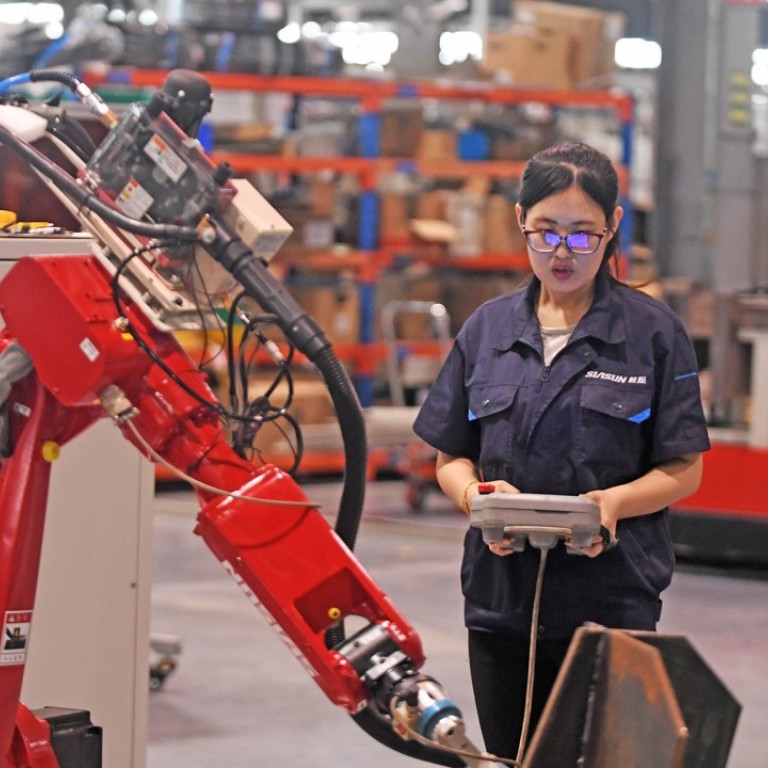
Why the Made in China 2025 road map to hi-tech supremacy will miss its deadline
Craig Addison says China’s leadership has done well to play down the ambitious plan, not just because of the trade war but also because it has become harder to acquire foreign technology, making official targets more difficult to achieve
“Designed to transform China from a manufacturing giant into a world manufacturing power”, according to the Xinhua News Agency announcement on May 19, 2015, the roll out of the state-backed industrial policy came at a time when Washington was distracted – to say the least.
China is often a punching bag during US presidential elections, and the last one was no exception, amplified by Trump's “America first” message and his frequent references to how China had “raped” the US economy and stolen its jobs.
In October 2015, China’s Ministry for Industry and Information Technology published a separate technology road map which laid out self-sufficiency targets in key sectors, including 80 per cent for new-energy vehicles, 70 per cent for industrial robots, 50 per cent for aviation systems and 40 per cent for mobile phone chips – all to be achieved by 2025.
Watch: Robotics a key cog in Made in China 2025 wheel

With mergers and acquisitions under a cloud, Beijing has only two options to achieve its 2025 targets: technology transfers and original research and development
With M&A under a cloud, Beijing has only two options to achieve its 2025 targets: technology transfers and original research and development. The first, whether “forced” or done willingly for access to the Chinese market, is also unlikely to work out in time for the 2025 localisation targets as Western tech companies have their guard up. In fact, in the short term, China’s reliance on core foreign technology is likely to increase as it upgrades it manufacturing lines with overseas parts.
Interestingly, the “domestic” production targets in Made in China 2025 exclude Taiwan, which Beijing says is part of China. If Taiwan production was included, the localisation targets in wireless telecoms, including semiconductors, would probably already be “achieved”, given the island’s technology leadership in these industries.
A study by the Mercator Institute concluded that while the most ambitious Made in China 2025 goal of a broad and economy-wide upgrading of industry by the stated deadline will “very likely not be reached due to weaknesses in the design and implementation of the policy”, it did note that the plan “will elevate a small but powerful group of Chinese manufacturers, dramatically increasing their competitiveness”.
It is just as well Chinese state media is downplaying Made in China 2025. While this didn’t work as a strategy to ease US-China trade tensions, it may turn out to be a handy face-saving move when the localisation targets miss their deadlines.
Craig Addison, a tech news editor at the Post, has been covering Asia technology since 1992. Follow @craigaddison

